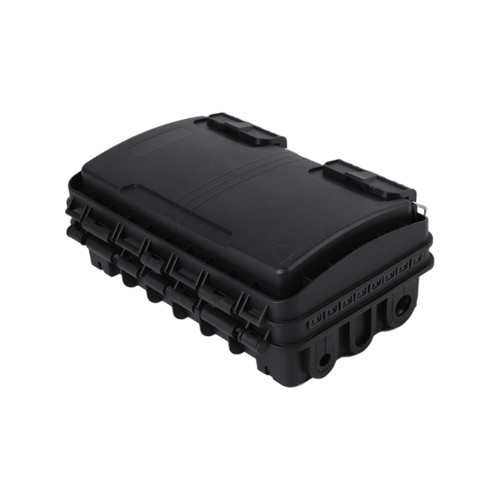Vast experience meets ambitious vision.
Home / News / What are the performance characteristics of optical cable splice boxes?What are the performance characteristics of optical cable splice boxes?
2022.11.11
Optical cable splice boxes can be seen everywhere in the optical communication industry, and its appearance has greatly facilitated people's lives. So what are the advantages and design features of optical cable splice boxes? Let's find out together!
The capacity of the splice tray of the optical cable splice box is 12 cores per tray in a single-core bundle, and 24 cores per tray in a double-core bundle. Cable entry and exit holes with capacity: The diameter of the port optical cable is 22cm, and it accommodates 4 splice trays.
The functional characteristics of the optical cable splice box are: to protect the optical fiber and the optical fiber joint from vibration, stamping, bending, etc., and to prevent moisture. The difference between the splice box and the terminal box is: the splice box is fully sealed and waterproof, but it cannot fix the pigtail; the terminal box is not waterproof, but the internal structure can not only fix the optical cable, but also fix the pigtail.
The optical cable splice box also has good sealing performance. The transmission attenuation of the optical fiber is closely related to the waterproof function. Therefore, the splice box must have excellent air-tight and waterproof functions. The splice box must have a certain degree of mechanical strength to ensure the connection. When the pressure applied at the box reaches 70% of its strength, the function of the fiber in between is not affected. At present, most of the shells of junction boxes are made of plastic products, in addition to corrosion resistance, aging resistance and insulation properties of materials. The splice box should be easily disassembled and the material can be reused. The connection box should be as simple as possible to reduce the labor intensity during connection and shorten the operation time.


The splice box should be composed of four parts: shell, internal components, sealing elements, and fiber optic connector maintenance parts. Here, let's not talk about the role of the shell: when required, the equipment on the shell is grounded to lead out the equipment to lead out the metal components in the junction box and the optical cable to the ground. Alternatively, a valve can be installed on the outer casing for inflation and measurement of air pressure during sealing inspection in the connection box. When necessary, the splice box should also have anti-hazard functions (for example, anti-termite). Measure the transmission characteristics (program, end type) of the optical cable, check the insulation resistance joint of the sheath to the ground, and then mark and record the optical fiber in sequence. It is carried out in a vehicle or in a joint tent, dust-proof and harmful gas (Freon) pollution, and the ambient temperature is ≧ 0° to ensure the flexibility of the optical fiber and the normal operation of the welding equipment. The length is ≧ 60cm, and the connection should be done as much as possible. Otherwise, measure the connector loss after the optical fiber is connected for moisture-proof and safety protection. Qualified repackaged maintenance pipes, the joint pit of the direct buried optical cable should be located on the right side of the route A→B, otherwise the left side should be marked on the route construction drawing. The shell of the splice box is made of electrostatic spray, which is beautiful in appearance and easy to use. The splice box is equipped with optical cable fixing equipment, splicing trays, and wire loops. The reel adopts a superimposed structure, and the equipment is flexible, the capacity can reach 96 cores, and the ribbon optical cable can reach 144 cores. The splice box has the function of insulating the metal components of the optical fiber cable from the shell of the optical fiber cable splice box and can easily lead out the grounding. The splice box can provide sufficient fiber optic cable termination and spare fiber storage space. The splice box can be customized according to the user's needs. Pressure 70KPa~106KPa.
related product
-

2 Way To Open Office / Home Safe
ZLS-806A
-

Digital Code Handgun Box
ZLS-814
-

Solid Wood Construction 3 Drawer Mobile File Cabinet
ZLS-822
-

Digital Touch Screen Office / Home Safe
ZLS-823
-

Fingerprint Reader Office / Home Safe
ZLS-824
-

Horizontal Fiber Optic Splice Closure 209-2
-

Horizontal Fiber Optic Splice Closure 203
-

Dome Fiber Optic Splice Closure 208-2A
GET STARTED TODAY ?
We Can Help You With
There are many variations of safe, but the majority have services for all types and sizes.

 英语
英语 中文简体
中文简体